
views
Fielding a Ground Ball
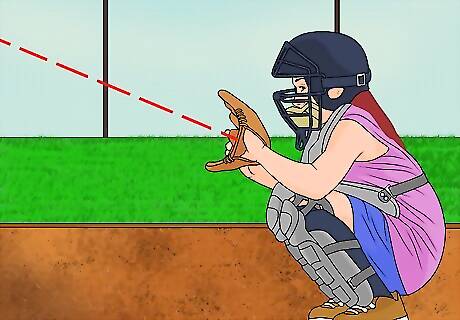
Lower your whole body. When the ball is rolling toward you along the ground, the most important thing is to bend your knees and get your body closer to the ground. You don’t want to simply bend at the waist and reach down. Lowering your body gives you more ability to adjust and it allows you to look around more than if you bend over.
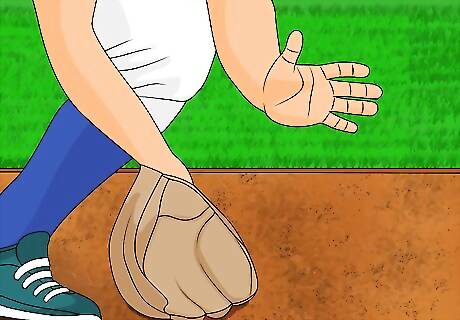
Touch the top of the mitt to the ground with your palm up. Although you usually catch the ball with your fingers up, ground balls require you to flip your mitt so your fingers point down. Rest the top of the mitt on the ground allowing it to act like a ramp that the ball will roll into.
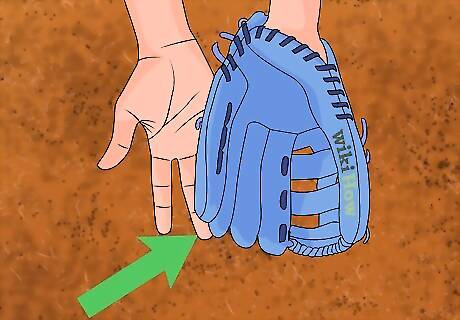
Place your ungloved hand on the bottom edge of your glove. This is one of the most important parts of catching ground balls. Your ungloved hand acts as a stop for the ball. Without this placement, the ball could roll straight up your glove and hit you in the face or just be dropped. The bottom part of your hands should be touching each other.

Clench the ball. As the ball rolls into your mitt, quickly clamp your hand down on the ball and close your glove. If you perfect the rhythm of fielding ground balls, you can learn to let the ball roll up your glove directly into your throwing hand.
Catching a Line Drive
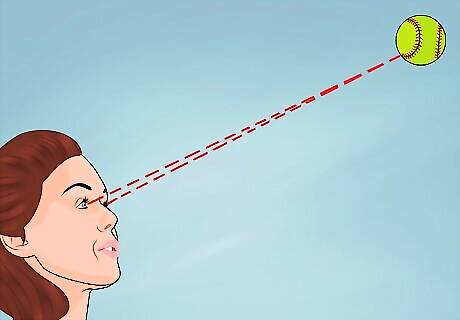
Keep your eye on the ball. Hand eye coordination is the most important part of catching a softball. You must train yourself to always watch the ball that is coming toward you. Taking your eyes off the ball for a second can throw off your ability to catch it. Practice watching the ball as soon as it leaves the bat or the thrower’s hand.
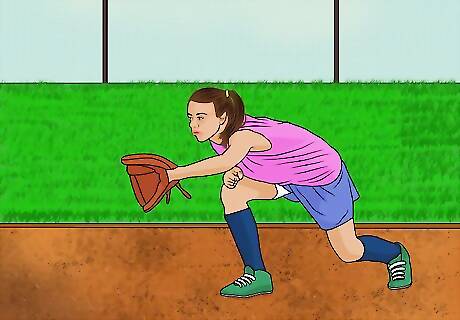
Move to where the ball is going to go. Move your whole body to where the ball is going, don’t just reach for it. Ideally you want to catch the ball directly in front of you rather than off to the side. Even though it can be scary at first to have the ball coming straight at you, this gives you the best chance of catching it. Having the ball off to the side increases the possibility of missing the catch.

Face the ball square. Once you have moved to where the ball is headed, position yourself directly in the line of the ball. Keeping the ball directly in front of you gives you the ability to move your glove around as needed in case the ball comes in higher or lower or off to either side of you.

Bend your knees. Although you have moved to where you think the ball is headed, you need to be able to quickly correct your positioning. Keep a good athletic stance with knees bent and most of your weight on the balls of your feet. This allows you to make quick movements should the ball end up in a different spot than you thought.
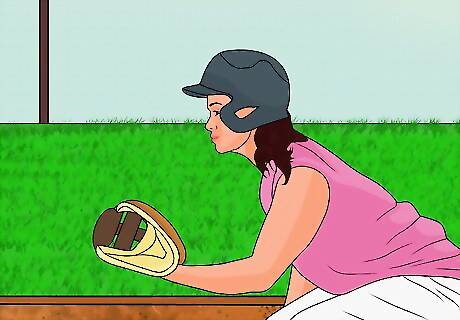
Extend your arms forward. With your mitt open, extend your arms out in front of you, keeping your elbows slightly bent. Just like bending your knees allows you to move, having your arms extended and slightly bent gives you the most mobility. Keep your arms at chest level as much as possible, and adjust them as the ball gets closer to you. Think of how you would position your arms if you were pushing against a wall. This is the position you want. Do your best to catch the ball out in front of you. Don't keep your hand level—you always want to catch with your hand facing upwards.
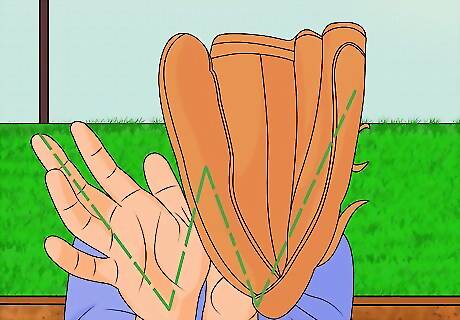
Place your ungloved hand against the side of your mitt. Catching is not just about using your mitt. Your free hand is just as important because it is used to secure the ball once it hits your mitt. Place your thumb just behind the thumb inside your mitt, form a W shape with your hands. This will give your mitt extra stability and allow you to clamp your free hand over the ball once the ball is in your glove.
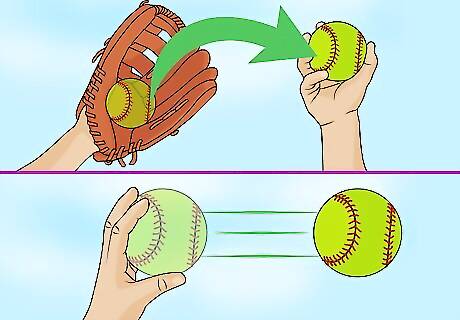
Be ready to throw. Many times when you catch the ball you will need to throw it to another player immediately, so this is why your throwing hand should be close to the mitt. Once you clamp the ball, you can transfer it to your free hand quickly and make the throw.
Adjusting for a Fly Ball
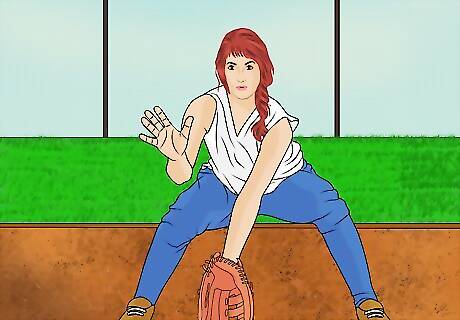
Get under the ball. This is the fly ball equivalent to getting in front of the ball. Since the ball will be coming from up in the air down to you, you need to move the spot where you think the ball is going to land. Be patient for a few seconds until you have the spot in mind before you move to it. You want the ball to come down slightly in front of you and slightly toward to your throwing side. Try to keep your arm extended out in front of you. This way, if the ball moves, you'll have time to correct yourself.
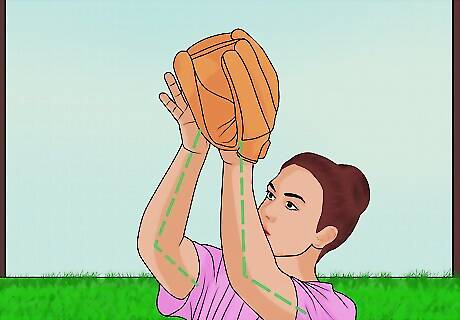
Hold your glove straight up. You will need to catch a fly ball over your head rather than at chest level, so once you have gotten to roughly the spot where you think the ball will land, raise your arm into the air. Point your fingers up to the sky and make sure the palm is slightly horizontal to give the ball a place to land. Keep your elbow slightly bent, and don’t lock it in place.
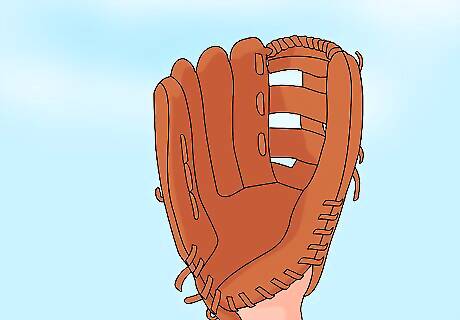
Open your mitt. This should be done as you raise your arm. You may not have much time between getting to the right spot, raising your arm, and making the catch, so be sure to keep your mitt hand loose while you run and open as you raise the arm.
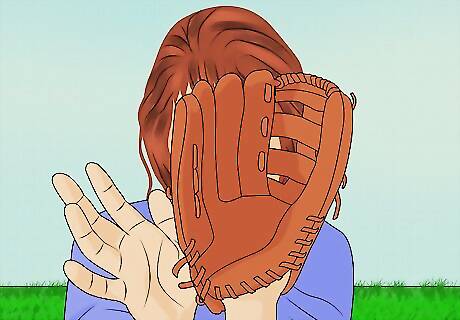
Place your free hand at the side of mitt. Just like in line drive catches, your ungloved hand is used to clench the ball in your glove and make sure you keep hold of the catch. Your hand should be touching the side of the glove when your arm is in the air. If you are going to need to throw the ball quickly, having this hand right by your glove will make the movement smoother.

Run forward for the catch. If you know a softball is coming from high up, you want to be patient until you have an idea where it is going to land. It is best to make the catch while moving forward rather than backward because you keep everything in your sight. So when positioning yourself, plan for the ball to land slightly in front of you and then move forward to get completely under it. Make sure that you're not catching the ball in the palm of your hand, as this can be painful. Instead, you should feel like the ball is hitting the end of your middle index fingers as you catch it.












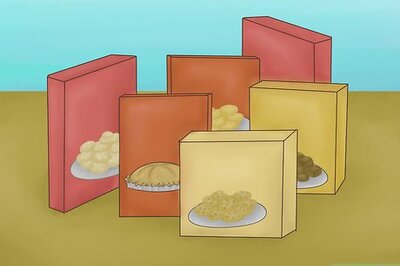





Comments
0 comment